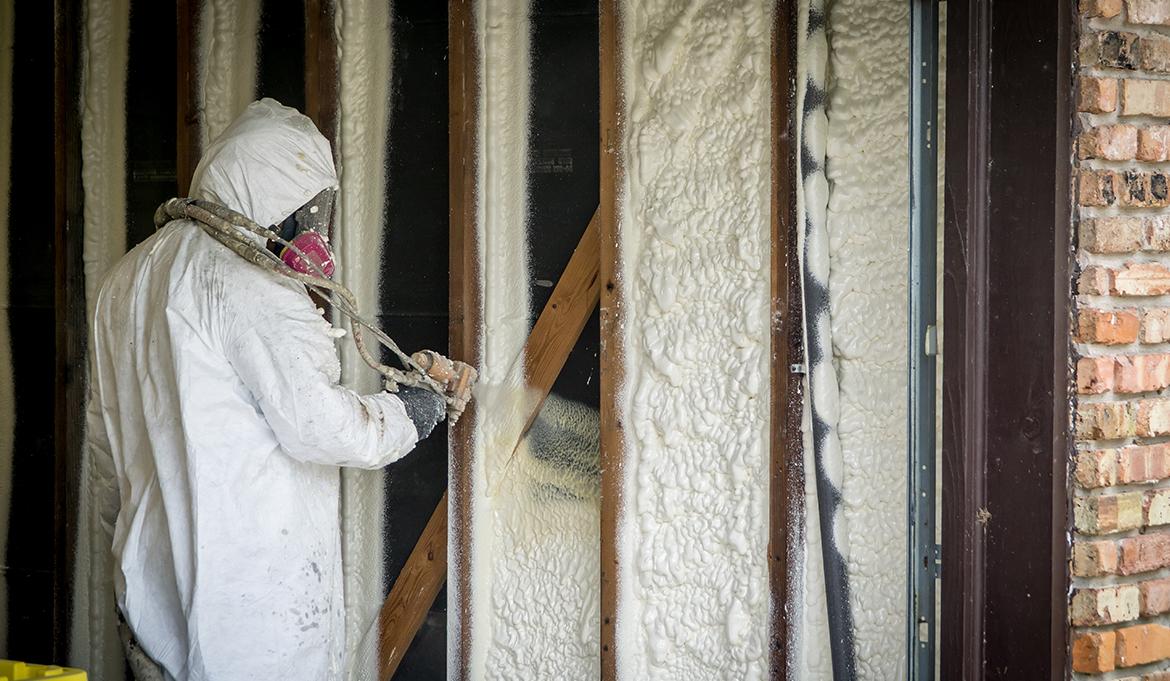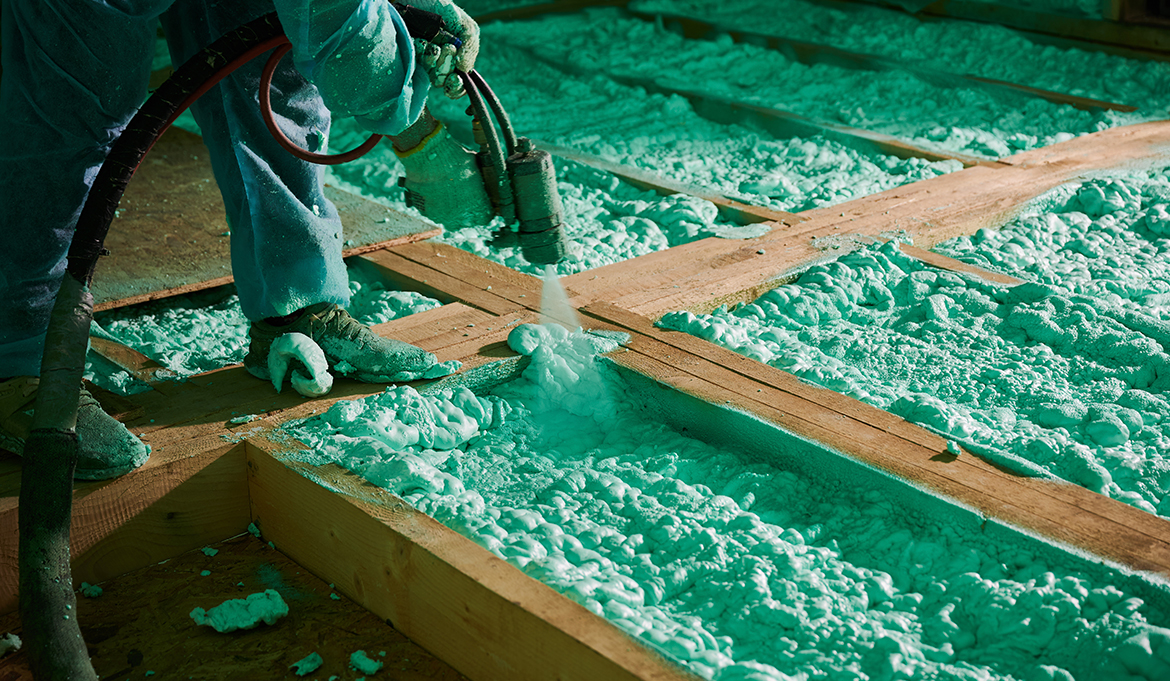Your Guide To All Types Of Insulation

Fill the cracks and for air-tight coverage with spray foam insulation
Making your home energy-efficient begins with choosing the right type of insulation. And the type of insulation you need depends on which part of your home you are insulating. One size fits all is not the deal here, and before we discuss all the types of insulation out there, it’s important to understand the basics of it. Click here for a quick refresher on Insulation 101.
The type of insulation you should go with depends on a number of factors, such as the part of your home that needs to be insulated, the R-value of the area, and of course your budget.
When you’ve done your background work on these factors, below are the types of insulation you can go for - and where they belong.
Batt and Poly Insulation
Fiberglass batts are one of the most common methods of insulation – and for good reason! It is an economical, fast, and effective method of insulating many projects and can achieve R-values up to R-50.
Batt and Poly insulation is frequently used on unfinished walls including foundation walls, as well as floors and ceilings.
Okanagan Insulation is committed to using only the highest quality of materials, which is why we utilize Johns Manville fiberglass batts that are manufactured in Canada, formaldehyde-free and will not off-gas. These batts are made from 50% recycled glass and are naturally fire resistant, mildew resistant, and will not deteriorate or break down in the wall cavity. This product also offers sound control by reducing sound transmission.

Blown-In Insulation
Blown-in, or loose fill, insulation is generally great for insulating irregularly shaped areas and obstructions. Specifically, this is the perfect solution to insulate your attic space.
Blown-in insulation uses small particles blown in by experienced installers. As with any type of insulation the quality of the material used here determines the quality of your insulation. Material such as cellulose, fiberglass and rock wool are generally used. Okanagan Insulation, with its commitment to quality, uses Johns Manville Climate Pro Formaldehyde-free blown-in fiberglass insulation which can achieve R-values up to R-70 and will not rot, mildew or deteriorate. As such, Okanagan Insulation can confidently offer a lifetime guarantee against attic settling.

Spray Foam Insulation
Spray Foam Insulation is ideal for any space that requires air and water-tight insulation with no gaps or holes. Since this is sprayed in, it covers a larger surface area and easily accesses hard-to-reach areas.
Okanagan Insulation uses Johns Manville Corbond IV – a superior product that is the ultimate choice for high-performing energy efficient commercial, residential, and industrial applications, for its Spray Foam Insulation.
This two-pound closed-cell spray foam, made from high-quality materials, provides R-value combined with seamless air and moisture control, all in one.

Thermal Acoustic Spray Foam Insulation
ThermaCoustic spray-applied thermal and acoustic insulation can be applied to a variety of substrates including concrete, steel, and wood. It can also be applied directly to fire-resistive materials. The single-step spray-applied process allows even the most complex surface configurations to be easily and efficiently covered with no seams or voids. This is used to insulate multi-unit residentials, commercial and industrial buildings as well as prefabricated steel buildings.
Considered to be a cost-effective insulation solution for large constructions, this can also be left exposed to save on finishing costs.

Pour In Place Foam Insulation
Polyurethane Pour In Place foam is another form of insulation, just less talked about. This foam is created from two components that expand to about 25 times its volume when mixed together. As you can imagine, this insulation is excellent at flowing into cracks and voids and is ideal for hard-to-reach, complex, or odd-shaped spaces.
The science behind this composite insulation is interesting: mixing a resin and an activator together causes a chemical reaction and foam to form and expand, filling the shape of the cavity it is in. Once cured, it’s a closed cell system meaning that the air is trapped inside but it keeps gas, oil, and water out. Because of its buoyancy, strength, and ability to plug as well as insulate, this foam can be used in marine projects like docks, buoys, and boat hulls.
The cured insulation foam is excellent for soundproofing and can be cut or sanded to any desired shape. It can also be laminated over with any type of polyester, epoxy, or vinyl ester resin without melting.
The mixture ratios are critical for this type of insulation and it’s crucial that when the foam is poured into a confined area, there is enough room for it to expand to avoid any damage. Thin barriers can be warped or glass can shatter if the product is not handled properly. Temperature is also a consideration so the professional insulation contractors with Okanagan Insulation Services (OKI) can advise you on whether their pour foam insulation service is ideal for your project. Curious? Get in touch today for a free insulation quote from the experts at OKI!

Serving the BC Interior for over 40 years, Okanagan Insulation started in Kelowna in the 1970s. Working with the team at Okanagan Insulation, you are guaranteed to get professional services at an honest and affordable price. Contact them today to learn more or get a free quote.